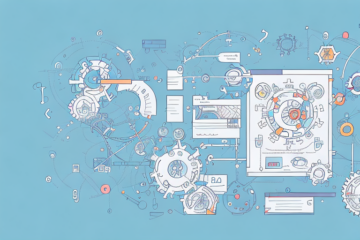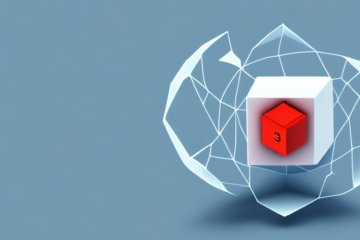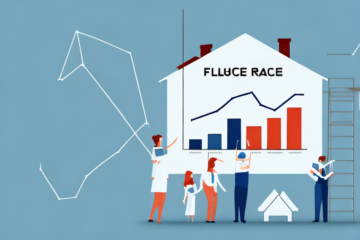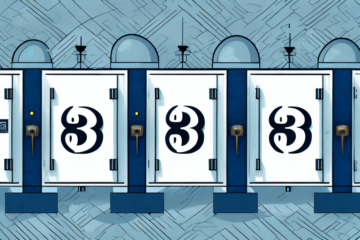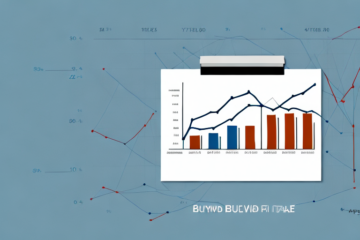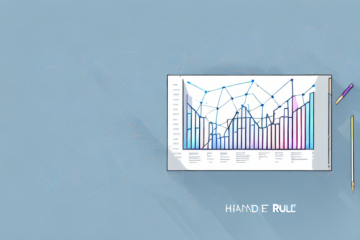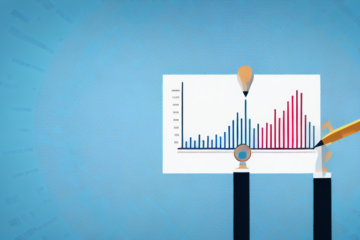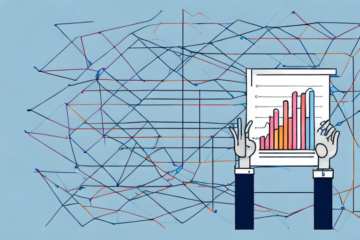What Is a 2-1 Buydown in Finance Terms?
If you’re in the market for a mortgage, you may have heard the term “2-1 buydown” thrown around. But what exactly does it mean? Simply put, a 2-1 buydown is a type of mortgage in which the borrower pays an additional fee upfront in exchange for a lower interest rate for the first two years of the loan term. After those two years, the interest rate increases to a predetermined level and remains there for the remainder of the loan term.
How Does a 2-1 Buydown Work?
With a 2-1 buydown, the borrower pays an upfront fee (often called “points”) in exchange for a reduced interest rate for the first two years of the loan. During this period, the borrower pays less interest on the loan than they would with a traditional fixed-rate mortgage. After the two-year period has passed, the interest rate on the loan adjusts to a predetermined level and remains at that level for the remainder of the term.
The reduced interest rate in the first two years can make it easier for borrowers to qualify for a mortgage. The lower monthly payments can also help borrowers ease into homeownership and manage their budgets during this period.
It’s important to note that while a 2-1 buydown can be beneficial for some borrowers, it may not be the best option for everyone. Borrowers should carefully consider their financial situation and long-term goals before deciding on a mortgage product. Additionally, it’s important to work with a reputable lender who can provide guidance and support throughout the homebuying process.
The Benefits of a 2-1 Buydown for Borrowers
There are several benefits to a 2-1 buydown for borrowers. First and foremost, this type of mortgage can make homeownership more affordable. By paying less interest in the first two years of the loan, borrowers can reduce their monthly mortgage payments and have more money to put toward other expenses.
Additionally, a 2-1 buydown can be a good option for borrowers who expect their income to increase in the coming years. The lower payments in the first two years of the loan can help these borrowers manage their budgets until their income increases, at which point they can comfortably make the higher payments required in the later years of the loan.
Another benefit of a 2-1 buydown is that it can help borrowers qualify for a larger loan amount. Since the initial payments are lower, borrowers may be able to qualify for a larger loan amount than they would with a traditional mortgage. This can be especially helpful for borrowers who are looking to purchase a more expensive home or who have a limited down payment.
Finally, a 2-1 buydown can provide borrowers with more financial flexibility. With lower payments in the first two years of the loan, borrowers can use the extra money to pay off other debts, save for emergencies, or invest in their future. This can help borrowers achieve their financial goals and improve their overall financial health.
The Pros and Cons of a 2-1 Buydown for Lenders
While a 2-1 buydown can be beneficial for borrowers, it also has its pros and cons for lenders. On the plus side, lenders can attract more customers by offering this type of mortgage. Additionally, lenders can earn more revenue upfront from the points paid by the borrower.
However, lenders also take on some risk with a 2-1 buydown. If a borrower defaults on their loan during the first two years, the lender may not recover the full amount of the points paid upfront. This risk can make some lenders hesitant to offer this type of mortgage to borrowers who are perceived as higher risk.
Another potential downside for lenders is that a 2-1 buydown can lead to lower profits over the long term. While lenders may earn more revenue upfront, they will receive less interest over the life of the loan due to the lower interest rate during the first two years. This can be especially problematic if interest rates rise significantly after the buydown period ends.
On the other hand, lenders may be able to mitigate some of these risks by carefully selecting borrowers and setting appropriate interest rates. By targeting borrowers with strong credit histories and stable incomes, lenders can reduce the likelihood of default and increase their chances of recovering their upfront costs. Additionally, lenders can adjust interest rates to account for potential changes in the market, ensuring that they continue to earn a reasonable return on their investment.
Understanding the Costs and Fees Associated with a 2-1 Buydown
Like any other mortgage product, a 2-1 buydown comes with its fair share of fees and costs. Some of the most common costs associated with this type of mortgage include:
- Points paid upfront
- Origination fees
- Appraisal fees
- Closing costs
It’s important for borrowers to carefully review all costs associated with a 2-1 buydown before deciding if it’s the right option for them.
In addition to the costs mentioned above, borrowers should also be aware of potential prepayment penalties associated with a 2-1 buydown. These penalties can be significant and may apply if the borrower pays off the mortgage early or refinances before the end of the buydown period.
Another factor to consider is the interest rate after the buydown period ends. Borrowers should be prepared for potentially higher monthly payments once the buydown period is over, as the interest rate will adjust to the market rate at that time.
How to Qualify for a 2-1 Buydown
To qualify for a 2-1 buydown, borrowers will typically need to meet certain criteria set by the lender. These criteria may include a minimum credit score, a certain debt-to-income ratio, and a steady income.
Borrowers should also be prepared to pay points upfront to secure the lower interest rate in the first two years of the loan. The number of points required will vary based on the lender and the specific terms of the mortgage.
It’s important for borrowers to understand that while a 2-1 buydown can provide initial savings on their mortgage payments, they will need to be prepared for the higher payments that will come after the first two years. It’s important to carefully consider their financial situation and ensure they will be able to afford the higher payments in the future.
Calculating the Savings with a 2-1 Buydown
One of the key considerations for borrowers deciding between a 2-1 buydown and other mortgage products is the potential savings they can realize with this type of mortgage. To calculate the savings, borrowers can use an online mortgage calculator or work with a lender to estimate their monthly payments over the life of the loan.
Borrowers should also consider the potential downside of a 2-1 buydown. If they plan to sell their home before the two-year period has passed, they may not realize the full savings and could end up losing money on the points paid upfront.
Another factor to consider when deciding on a 2-1 buydown is the borrower’s financial situation. If the borrower has a stable income and can comfortably afford the higher payments during the first two years, then a 2-1 buydown may be a good option. However, if the borrower’s income is uncertain or they anticipate financial difficulties in the near future, a 2-1 buydown may not be the best choice.
It’s also important for borrowers to shop around and compare different lenders and mortgage products before deciding on a 2-1 buydown. While this type of mortgage can offer savings, it may not be the best option for every borrower. By doing their research and considering all factors, borrowers can make an informed decision about whether a 2-1 buydown is right for them.
Comparing a 2-1 Buydown to Other Mortgage Options
Before deciding on a 2-1 buydown, borrowers should consider how this type of mortgage compares to other options on the market. Fixed-rate mortgages, adjustable-rate mortgages, and interest-only mortgages are just a few of the products borrowers may want to consider.
When comparing different mortgage options, borrowers should carefully review the terms and costs associated with each product to determine which one makes the most sense for their financial situation.
It’s also important for borrowers to consider their long-term financial goals when choosing a mortgage option. For example, if a borrower plans to stay in their home for a long period of time, a fixed-rate mortgage may be a better option as it provides stability and predictability in monthly payments. On the other hand, if a borrower plans to sell their home in a few years, an adjustable-rate mortgage may be a better fit as it typically offers lower initial interest rates.
Real-Life Examples of Successful 2-1 Buydowns in Finance
There are many examples of borrowers who have successfully used a 2-1 buydown to achieve their financial goals. For example, a borrower who is planning to retire in a few years may find a 2-1 buydown to be a good option, as it can help them manage their expenses during the early years of their retirement.
Another example is a borrower who expects their income to increase in the coming years. By opting for a 2-1 buydown, this borrower can have lower mortgage payments in the early years of the loan when their income may be lower, and then make higher payments later when their income has increased.
Additionally, a borrower who is purchasing a home in a competitive real estate market may use a 2-1 buydown to make their offer more attractive to sellers. By offering lower initial mortgage payments, the borrower may be able to negotiate a lower purchase price or win a bidding war against other buyers.
Another scenario where a 2-1 buydown can be beneficial is for borrowers who are self-employed or have irregular income. By having lower initial mortgage payments, they can better manage their cash flow during periods of lower income and then make higher payments when their income increases.
Common Misconceptions About 2-1 Buydowns in Finance Explained
Despite the benefits of a 2-1 buydown, there are many misconceptions about this type of mortgage. One common misconception is that it’s only available to borrowers with excellent credit. While a good credit score can help borrowers qualify for a 2-1 buydown, it’s not the only factor lenders consider.
Another common misconception is that a 2-1 buydown is only a good option for borrowers who plan to stay in their home for a long time. While this can be true in some cases, a 2-1 buydown can also be a good option for borrowers who plan to sell their home in the near future.
Additionally, some borrowers may believe that a 2-1 buydown is too complicated or difficult to understand. However, with the help of a knowledgeable lender or mortgage professional, the process can be explained in simple terms and tailored to fit the individual borrower’s needs and financial goals.
Why Consider a 2-1 Buydown Instead of Paying Points?
When considering a 2-1 buydown, some borrowers may wonder if it’s better to simply pay points upfront to secure a lower interest rate on their mortgage. While paying points can be a good option for some borrowers, a 2-1 buydown can offer a number of benefits, including lower payments in the early years of the loan and reduced risk for borrowers who expect their income to increase in the near future.
Another advantage of a 2-1 buydown is that it can help borrowers qualify for a larger loan amount. By reducing the initial payments, borrowers may be able to meet the debt-to-income ratio requirements set by lenders, which can be especially helpful for those with high levels of debt or lower incomes.
Additionally, a 2-1 buydown can provide borrowers with more flexibility in their budgeting. With lower payments in the first two years of the loan, borrowers can use the extra funds to pay off other debts, save for emergencies, or invest in their future. This can help borrowers achieve their financial goals while still being able to afford their mortgage payments.
Tips on How to Negotiate the Best Possible Deal on a 2-1 Buydown
If you’re interested in a 2-1 buydown, it’s important to do your research and shop around for the best deal. Some tips for negotiating the best possible deal on a 2-1 buydown include:
- Comparing offers from multiple lenders
- Being willing to pay a higher upfront fee to secure a lower interest rate
- Asking about any credits or discounts that may be available
- Negotiating on closing costs and other fees associated with the mortgage
Another important tip to keep in mind when negotiating a 2-1 buydown is to consider the length of time you plan to stay in the home. If you plan to sell or refinance within the first few years, a 2-1 buydown may not be the best option for you. However, if you plan to stay in the home for a longer period of time, a 2-1 buydown can help you save money on interest payments in the long run.
How to Determine If a 2-1 Buydown Is Right for You and Your Financial Goals
If you’re considering a 2-1 buydown, it’s important to carefully consider your financial goals and overall budget. This type of mortgage can offer many benefits, but it’s not the right option for everyone.
Before deciding on a 2-1 buydown, it’s a good idea to speak with a lender and review all the terms and costs associated with the mortgage. This can help you make an informed decision about whether a 2-1 buydown is right for your needs.
One benefit of a 2-1 buydown is that it can provide lower monthly payments during the first few years of the mortgage. This can be helpful for those who anticipate a decrease in income during that time period, such as new parents or those planning to return to school.
However, it’s important to note that the interest rate will eventually increase, which means that monthly payments will also increase. This can be a challenge for those who are not prepared for the higher payments and may lead to financial strain.
What Are the Risks Involved in Choosing a 2-1 Buydown in Finance?
As with any financial decision, there are some risks involved in choosing a 2-1 buydown. The biggest risk is that the borrower may not be able to make the higher payments required after the first two years of the loan. If this happens, the borrower may be at risk of defaulting on the loan and losing their home.
Additionally, if the borrower sells their home before the two-year period has passed, they may not realize the full savings from the 2-1 buydown and could end up losing money on the points paid upfront.
Overall, a 2-1 buydown can be a good option for borrowers who are looking for a more affordable mortgage in the early years of their loan term. By carefully weighing the costs and benefits of this type of mortgage, borrowers can make an informed decision about whether it’s the right choice for their financial goals.
Another risk to consider when choosing a 2-1 buydown is the possibility of interest rates rising after the initial two-year period. If interest rates increase significantly, the borrower may end up paying more in interest over the life of the loan than they would have with a traditional mortgage. It’s important to factor in potential interest rate changes when deciding whether a 2-1 buydown is the right choice for your financial situation.


